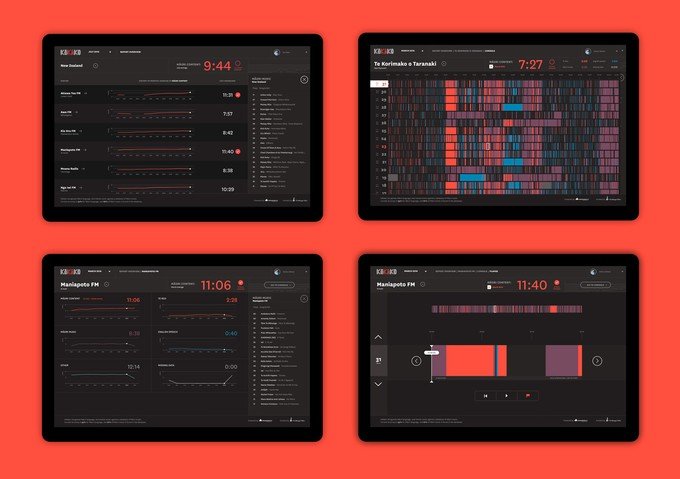Best Design Awards 2016: K?kako and how technology and design can promote language

Te M?ngai P?ho’s language recognition system, K?kako, was named a Supreme Winner in the interactive category and awarded a Purple Pin in the 2016 Best Design Awards last week. A technology developed by Dragonfly Data Science that recognises spoken or sung M?ori content and provides data on how much is being broadcast and at what times. The automated system continuously listens to broadcasts, eliminating the need for continuous manual listening. Reporting is available in close to real time, allowing broadcasters or stakeholders to follow activity on their networks. K?kako can also be trained to recognise any language or dialect with reporting, customised for specific communities or agencies.

The identity and user interface for the software was designed by the team at Salted Herring, a Wellington-based brand and digital agency. “They needed a design partner to turn it into a meaningful user experience,” explains Salted Herring creative director Pep Zuijderwijk, who served as the design director for the project. “There’s a lot of interest [in this]. It could be applied to other minority languages, like Gaelic.”
Assisted by team members Ryan Shields, Roberto Uribe, Simon Winter and Kate Handley – as well as contributors Douglas Bagnall and Dragonfly Data Science – making sure everything was culturally relevant was also important, Zuijderwijk explains. “One challenge was understanding the technical aspects. We also wanted to get it right with the look to be culturally relevant. The clients played a big part to make sure it would resonate.”

But resonate it has. “It’s an amazing feeling [to win a Purple Pin at the Best Design Awards],” says Zuijderwijk. “Partially because the project has so much going for it. Not just the technology and innovation, but also the cultural significance.”
In congratulating Salted Herring on the win, Te M?ngai P?ho Board Chair Prof Piri Sciascia says the technology has played an important role in helping to promote modern and natural Te Reo M?ori usage and to make M?ori programmes and music more accessible to a broader audience. “We know that being able to speak Te Reo M?ori on air naturally alongside English encourages increased use of M?ori language,” he says. “K?kako provides a way of measuring segments of M?ori content as it appears.”

He says K?kako is a product of both innovative technology and design, one that is “A great example of a successful combination of an innovative idea that emphasises clever technology, and a beautifully crafted user experience.”




